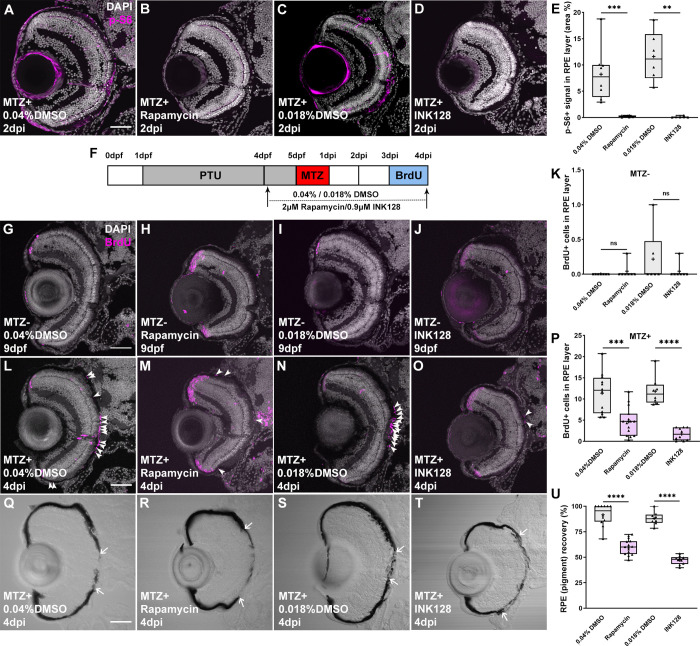2
(A-D) Immunofluorescent images of p-S6 staining on transverse cryosections from MTZ+ DMSO-, rapamycin- or INK128-treated larvae at 2dpi. Nuclei (white), p-S6 (magenta) (E) p-S6 levels in the RPE layer were significantly decreased in rapamycin-treated and INK128-treated larvae when compared with DMSO-treated controls. (F) Schematic of the experimental paradigm showing the timeline for chemical treatments and ablation. (G-J) Immunofluorescent images of BrdU staining on transverse cryosections from MTZ- DMSO-, rapamycin- and INK128-treated larvae at 9dpf and (L-O) from MTZ+ DMSO-, rapamycin- or INK128 -treated larvae at 4dpi.

